DAVIDIAN AND BRANCH DAVIDIAN TIMELINE
1885 (March 2) Victor Tasho Houteff was born in Raikovo, Bulgaria.
1902 (January 5) Benjamin L. Roden was born in Bearden, Oklahoma.
1907 Houteff immigrated to the United States.
1919 Houteff became a Seventh – day Adventist.
1928 Houteff began intensive study of Bible prophecy.
1929 Houteff began to teach his ideas at his local Seventh-day Adventist church in Los Angeles.
1929 Houteff began to publish his ideas in The Shepherd’s Rod.
1934 After a hearing with Seventh-day Adventist officials, Houteff was officially removed from the church rolls because of his teachings.
1935 (May) Houteff and a small group of followers moved to a 189-acre parcel of land outside of Waco, Texas, which they named Mount Carmel.
1937 (January 1) At age fifty-two, Houteff married Florence Hermanson, the seventeen-year-old daughter of two of his followers.
1937 (February 12) Ben Roden married Lois I. Scott.
1940 Ben and Lois Roden joined the Seventh-day Adventist Church, first in Kilgore then in Odessa, Texas.
1940s In the early to mid-1940s the Rodens encountered Houteff’s Shepherd’s Rod movement.
1943 Houteff’s group was formally incorporated as “the General Association of Davidian Seventh-day Adventists.”
1952 Houteff sent out thirty missionaries from Mount Carmel, with the goal of spreading his message to every Seventh-day Adventist family in North America.
1955 (February 5) Houteff died at the age of 69.
1955 Florence Houteff assumed leadership of the group of her husband’s followers.
1955 Identifying himself as “the Branch” mentioned in Zechariah 3:8 and 6:12, Ben Roden laid claim to leadership of the Davidians.
1955 (December 7) The Davidians sold their original parcel of land and relocated to “New Mount Carmel,” 941 acres near the town of Elk, Texas, nine miles east of Waco.
1958 Ben Roden went to Israel to set up a community that would form the core of the new Davidian community of 144,000.
1959 Florence Houteff became convinced that the events of the end would take place during the Passover season, culminating on or about April 22.
1959 Some 1,000 Davidians gathered at New Mount Carmel for Passover, but their numbers dwindled when no significant events transpired.
1959 Florence Houteff left New Mount Carmel for California and ceased to exercise any leadership over the Davidians.
1959 Ben Roden emerged as the leader of the group at the New Mount Carmel Center.
1961 In the wake of Florence Houteff’s failed prophecy, some Davidians decided to relocate first to Riverside, California and then in 1970 to Salem, South Carolina; this splinter group has remained faithful to Houteff’s theology.
1962 (March 1) Florence Houteff formally resigned as leader of the Davidians.
1960s Rival factions battled in court for control of the New Mount Carmel property.
1973 (February 27) Ben Roden and the Branch Davidians completed the purchase of Mount Carmel .
1977 Lois Roden initiated her own prophetic claims and received revelation that the Holy Spirit is a feminine figure.
1978 Ben Roden dies and is succeeded in his leadership role by his wife, Lois.
1980 Lois Roden published the first edition of her magazine, Shekinah.
1981 David Koresh, then known as Vernon Howell, joined the Branch Davidians at Mount Carmel.
1983 Lois Roden recognized David Koresh as her successor.
1986 Lois Roden died and was buried next to her husband on the Mount of Olives in Jerusalem.
FOUNDER/GROUP HISTORY
The sectarian group that became known as the Branch Davidians was part of a complex religious history. The Branch Davidians led by David Koresh, so familiar from the disastrous BATF raid on their Mount Carmel Center on February 28, 1993 and the ensuing fifty-one day siege conducted by the FBI that ended with a fire that destroyed the Center and took 74 lives, were part of a tradition that reached back at least to the nineteenth century.
In the mid-nineteenth century in upper New York state the Baptist layman William Miller (1782-1849) proclaimed that through
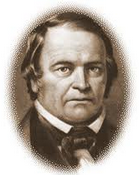 diligent study he had been unable to unravel the mysteries of the biblical book of Revelation and, hence, of the time of the end of the world and the second coming of Jesus. From 1831 to 1843 he estimated that he had brought his message to a half million persons. By Miller’s calculation, the return of Jesus would happen between March 21, 1843 and March 21, 1844. When latter date passed without anything significant happening, Miller, like many others who have prophesied the end, did not lose faith in his prediction. Instead, he adjusted his calculations and reset the date for October 22, 1844. Expectations heightened as summer turned into fall, but the date again came and went without incident. Those who had believed Miller’s prophecy experienced what came to be called the “Great Disappointment , ” and his prophetic career came to an end. But even that second experience of disconfirmation was not sufficient to quell completely an interest in the imminent dawn of the millennium (Rowe 2008: 192-225).
diligent study he had been unable to unravel the mysteries of the biblical book of Revelation and, hence, of the time of the end of the world and the second coming of Jesus. From 1831 to 1843 he estimated that he had brought his message to a half million persons. By Miller’s calculation, the return of Jesus would happen between March 21, 1843 and March 21, 1844. When latter date passed without anything significant happening, Miller, like many others who have prophesied the end, did not lose faith in his prediction. Instead, he adjusted his calculations and reset the date for October 22, 1844. Expectations heightened as summer turned into fall, but the date again came and went without incident. Those who had believed Miller’s prophecy experienced what came to be called the “Great Disappointment , ” and his prophetic career came to an end. But even that second experience of disconfirmation was not sufficient to quell completely an interest in the imminent dawn of the millennium (Rowe 2008: 192-225).
Among the Millerites who held onto the conviction that Miller had actually been correct in his prophecies, was a small group in Washington , New Hampshire led by Joseph Bates, James White and Ellen G. Harmon (1827-1915), whom White married in 1846. They believed that Miller’s prophecy correctly referred to Christ entering the inner room of the heavenly temple in order to begin his final work of judgment. So, the events of the end had in fact begun, but they had not yet manifested themselves on earth. Based on their interpretation of Revelation 14 and other biblical texts, the Whites and Bates advocated for observing the Lord’s Day on Saturday as the seventh day of the week, believed that the final judgment was currently unfolding, and expected to be 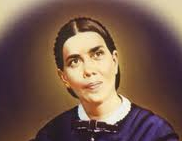 guided by revelation from God in their own time. Ellen G. White, who became the group’s prophet, came to call that contemporary revelation “present truth” or “new light.” The twin foci of observing the Lord’s Day on Saturday and maintaining the expectation of Jesus’ imminent return to initiate the final judgment would remain central characteristics of Seventh-day Adventism from the time of its origins in the small band of New Hampshire Millerites through its entire history. The openness to receiving prophetic “present truth” introduced a principle of dynamism into the broad Adventist tradition that played an especially important role in the origins of both the Davidians and the Branch Davidians (see Gallagher 2013) .
guided by revelation from God in their own time. Ellen G. White, who became the group’s prophet, came to call that contemporary revelation “present truth” or “new light.” The twin foci of observing the Lord’s Day on Saturday and maintaining the expectation of Jesus’ imminent return to initiate the final judgment would remain central characteristics of Seventh-day Adventism from the time of its origins in the small band of New Hampshire Millerites through its entire history. The openness to receiving prophetic “present truth” introduced a principle of dynamism into the broad Adventist tradition that played an especially important role in the origins of both the Davidians and the Branch Davidians (see Gallagher 2013) .
The more proximate origins of the Branch Davidians can be traced to the activities of Victor Houteff (1885-1955), a Bulgarian
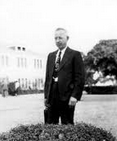 immigrant to the United States who joined the Seventh-day Adventist (SDA) Church in 1919 in Illinois . As Houteff studied the Bible, he developed two distinctive ideas that were out of conformity with established SDA doctrine. First, expressing a vivid sectarian indictment of the SDA Church, he disagreed with Ellen G. White that the 144,000 mentioned in Revelation 7 as being worthy of entering the new Jerusalem referred to the Adventists themselves. Instead, he argued that the Church had become complacent and pervaded by “worldly” influences. He saw his own mission as purifying the church from within and gathering a truly faithful 144,000 in anticipation of the Lord’s return. Second, he argued that it was his task to lead the purified 144,000 to the ancient land of Israel , where they would meet Christ at his return. Both the Davidian and Branch Davidian traditions developed an elitist self-conception according to which they would be the first to be redeemed upon the return of Jesus. Borrowing a concept from the agricultural festivals of the ancient Israelites, Ben Roden , one of the leaders who followed Houteff, described the Branch Davidians as “the first of the first fruits – wave-sheaf, vanguard NOT wave-loaves – 144,000, army” of the final harvest of salvation (Ben Roden 1959: 4).
immigrant to the United States who joined the Seventh-day Adventist (SDA) Church in 1919 in Illinois . As Houteff studied the Bible, he developed two distinctive ideas that were out of conformity with established SDA doctrine. First, expressing a vivid sectarian indictment of the SDA Church, he disagreed with Ellen G. White that the 144,000 mentioned in Revelation 7 as being worthy of entering the new Jerusalem referred to the Adventists themselves. Instead, he argued that the Church had become complacent and pervaded by “worldly” influences. He saw his own mission as purifying the church from within and gathering a truly faithful 144,000 in anticipation of the Lord’s return. Second, he argued that it was his task to lead the purified 144,000 to the ancient land of Israel , where they would meet Christ at his return. Both the Davidian and Branch Davidian traditions developed an elitist self-conception according to which they would be the first to be redeemed upon the return of Jesus. Borrowing a concept from the agricultural festivals of the ancient Israelites, Ben Roden , one of the leaders who followed Houteff, described the Branch Davidians as “the first of the first fruits – wave-sheaf, vanguard NOT wave-loaves – 144,000, army” of the final harvest of salvation (Ben Roden 1959: 4).
Unlike Ellen G. White, Houteff did not base his authority on visions or other kinds of immediate interaction with the divine, but he did claim that his own work was important in his day as Moses’ work was in his. He was convinced that the moral and spiritual decline of the SDA Church had led it to a crisis point and that its members could either choose to follow him and embark again on the path towards salvation or stick with the Church’s teachings as recently articulated and experience damnation. In 1929, Houteff, then in Los Angeles , began to teach his message. When the SDA Church formally rejected Houteff’s teachings in 1934 and excommunicated him, he felt he had no choice other than to form his own organization. By 1935, Houteff had decided to relocate with his followers to Texas and he arranged for the purchase of a large tract of land outside Waco where they established the Mount Carmel Center (based on their understanding of the prophecy in Amos 1:2). Signaling his hope for the restoration of a physical messianic kingdom in the land of Israel , he named his group the Davidian Seventh-day Adventist Association to evoke the ancient kingdom ruled by King David.
Houteff first published his theological ideas in a tract entitled The Shepherd’s Rod , and the group of his followers was informally  known by that name ( Victor Houteff 1930) . The first volume was quickly followed by a second and throughout the 1930s, 1940s and early 1950s Houteff produced multiple religious tracts and collections of his sermons that were distributed by the Davidian publishing operation to a growing list of SDA Church members. In February, 1943 he published The Leviticus of the Davidian Seventh-day Adventists , which details the constitution, by-laws, system of government, and form of education for the Davidian community (Victor Houteff 1943) . Much of the one hundred page document is devoted to citing the authorizing precedents from both the Bible and the writings of Ellen G. White.
known by that name ( Victor Houteff 1930) . The first volume was quickly followed by a second and throughout the 1930s, 1940s and early 1950s Houteff produced multiple religious tracts and collections of his sermons that were distributed by the Davidian publishing operation to a growing list of SDA Church members. In February, 1943 he published The Leviticus of the Davidian Seventh-day Adventists , which details the constitution, by-laws, system of government, and form of education for the Davidian community (Victor Houteff 1943) . Much of the one hundred page document is devoted to citing the authorizing precedents from both the Bible and the writings of Ellen G. White.
Under Houteff’s leadership the Davidians consolidated and developed the community at the Mount Carmel Center and devoted considerable time, effort, and money to spreading their message to all SDA Church members in North America and beyond (including Australia, England, India, and the West Indies). They continued to refine their understanding of biblical prophecy while maintaining their hope that the return of Jesus to conduct the final judgment would happen soon.
When Houteff died in February, 1955, the Davidians lost their leader and faced a dilemma that affects virtually every first-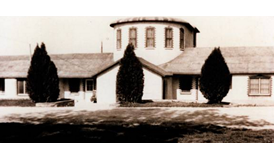 generation religious group. Kenneth Newport suggests that at least some of the 100 or so members of the Mount Carmel community probably left after Houteff’s death, but those who remained faced the task of developing new leadership (Newport 2006: 66). Into that breach entered Houteff’s wife, Florence, along with several other contenders. Soon after Victor’s death, Florence began to make predictions about the future of the community, apparently including the idea that Victor himself would be resurrected. Claiming that on his deathbed Victor had urged her to take over his position, Florence quickly and persistently made her case to the Executive Council of the Davidian Association and eventually garnered their recognition.
generation religious group. Kenneth Newport suggests that at least some of the 100 or so members of the Mount Carmel community probably left after Houteff’s death, but those who remained faced the task of developing new leadership (Newport 2006: 66). Into that breach entered Houteff’s wife, Florence, along with several other contenders. Soon after Victor’s death, Florence began to make predictions about the future of the community, apparently including the idea that Victor himself would be resurrected. Claiming that on his deathbed Victor had urged her to take over his position, Florence quickly and persistently made her case to the Executive Council of the Davidian Association and eventually garnered their recognition.
During her time as the leader of the Davidians, Florence Houteff continued to put out new issues of the periodical The Symbolic 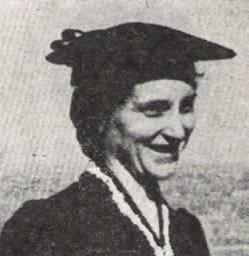 Code, of which nine volumes had been published during her husband’s life (Florence Houteff 1955-1958). To this day there remains controversy about whether Florence ‘s “new Codes” contain the genuine teaching of her husband. But by far the most dramatic and controversial move that Florence made was to set the date of the beginning of the end times. Echoing William Miller’s decision that produced the Great Disappointment, Florence proclaimed that at the end of the Passover season, on April 22, 1959, the events of the end would begin to take place (Newport 2006:101). She urged the Davidians to assemble at the Mount Carmel Center, and some 1,000 did.
Code, of which nine volumes had been published during her husband’s life (Florence Houteff 1955-1958). To this day there remains controversy about whether Florence ‘s “new Codes” contain the genuine teaching of her husband. But by far the most dramatic and controversial move that Florence made was to set the date of the beginning of the end times. Echoing William Miller’s decision that produced the Great Disappointment, Florence proclaimed that at the end of the Passover season, on April 22, 1959, the events of the end would begin to take place (Newport 2006:101). She urged the Davidians to assemble at the Mount Carmel Center, and some 1,000 did.
The scenario that Florence envisioned replicated much of what her husband had already preached. War would devastate the Middle East and open the possibility for the Davidians to set up their messianic kingdom in the land of Israel; the SDA Church would be purified and the 144,000 eligible for salvation would be gathered.
The failure of Florence Houteff’s prophecy nearly devastated the Mount Carmel community. Those who remained in the community resorted to another familiar strategy for dealing with the disconfirmation of prophecy. A 1960 report argued that the kingdom had failed to materialize because Davidian evangelization efforts had been limited only to the SDA church. It urged that the mission be extended to all Protestant churches (Newport 2006:107). That decision, at least, bought the community more time to spread its message.
There was additional fallout from the disconfirmation as well. A 1961 meeting in Los Angeles effectively split the Davidians into two separate groups. One remained centered at Mount Carmel and the other ended up being based in Salem, South Carolina, where it continues to this day (The General Association of Davidian Seventh-day Adventists 2013; Newport 2006:108).
It then took some time for clear leadership to emerge among the Mount Carmel Branch Davidians. When it did, it was in the 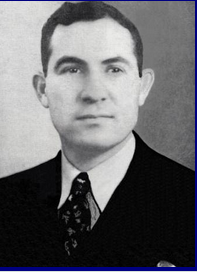 person of Benjamin Roden (1902-1978). After joining the SDA church in 1940 Roden and his wife Lois (1905-1986) had first encountered Victor Houteff’s Shepherd’s Rod message sometime in the mid-1940s. It appears that the Rodens had first visited Mount Carmel no later than 1945. They returned several times over the next decade, and when Victor Houteff died in 1955, Ben Roden was confident enough of himself that he made an unsuccessful bid for the leadership of the community.
person of Benjamin Roden (1902-1978). After joining the SDA church in 1940 Roden and his wife Lois (1905-1986) had first encountered Victor Houteff’s Shepherd’s Rod message sometime in the mid-1940s. It appears that the Rodens had first visited Mount Carmel no later than 1945. They returned several times over the next decade, and when Victor Houteff died in 1955, Ben Roden was confident enough of himself that he made an unsuccessful bid for the leadership of the community.
Roden justified his claim to leadership on the foundation of his own prophetic call. Building on texts like Isaiah 11:1, Zechariah 3:8 and 6:12, and John 15:1-3, he began to conceive of himself as “The Branch,” the individual chosen by God to complete the work that Victor Houteff had begun (Ben Roden 1958) . Roden’s self-designation would also carry over to his followers, who came to be known as the Branches or Branch Davidians. Although Roden did not really acknowledge that he was not the leader of Mount Carmel community, he directed his attention elsewhere in the later 1950s. With his wife and family, he turned to Israel and setting up a community that would form the basis of the eventual Davidic messianic community in the Holy Land Ben Roden 1960). While Florence Houteff and the Mount Carmel Davidians moved inexorably towards the date of April 22, 1959, Ben Roden busied himself with establishing a community in Israel, developing his own distinctive teachings as “The Branch,” and setting up a headquarters in Odessa, Texas. In 1965, after Florence ‘s abdication, he tried to purchase the remaining Mount Carmel property from the trustee who was assigned to liquidate it. After extensive legal wrangling about who really held title to the property, among other things, Roden finally completed the purchase in February of 1973 (Newport 2006:128) .
Throughout the 1960s and 1970s Roden continued to develop and refine his theological ideas. The establishment of a literal kingdom of God in Israel remained a central focus, and Roden even had himself crowned “Viceregent of the Most High God” in June, 1970 at Mount Carmel (Newport 2006: 148). Ben Roden’s writings are not easily accessible. He follows the example of Victor Houteff in compiling complex mosaics of quotations from the Bible and other authorities like Ellen G. White. Their meaning is apparently intended to be self-evident because he offers very little guidance about how they are to be interpreted. David Koresh would later adopt the same expository style in his unfinished manuscript on the meaning of the seven seals in the book of Revelation.
Roden also emphasized that true Adventists should observe not only the moral law of the Christian Old Testament but the ceremonial law as well. Consequently, he introduced the observation of festivals like Passover, Pentecost, and Tabernacles to the Mount Carmel community and framed the understanding of them in eschatological terms. The observation of Passover at Mount Carmel would play an important role in the negotiations between the FBI and members of the community during the fifty-one day siege (Tabor and Gallagher 1995:15).
Like the Adventist leaders before him, Ben Roden did not live to see his fondest hopes fulfilled. The return of Jesus to conduct the 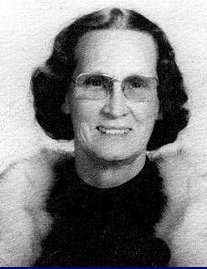 Last Judgment was again delayed. But Roden’s death did not threaten the community with disintegration because his wife Lois was already poised to assume the responsibility of leadership, although the Roden’s son George did dispute her right of succession and would remain a serious irritant to the Mount Carmel community for some time. Like her husband, Lois based her claims on charismatic grounds. She had begun to receive revelations in 1977, and they were the driving force for her innovative theological program, particularly the idea that the Holy Spirit was feminine (Lois Roden 1980). George resorted to more traditional grounds for his claims, asserting that his father had appointed him to a central role in the movement, since Ben Roden believed that his sons would live to see the rebuilding of the temple in Jerusalem .
Last Judgment was again delayed. But Roden’s death did not threaten the community with disintegration because his wife Lois was already poised to assume the responsibility of leadership, although the Roden’s son George did dispute her right of succession and would remain a serious irritant to the Mount Carmel community for some time. Like her husband, Lois based her claims on charismatic grounds. She had begun to receive revelations in 1977, and they were the driving force for her innovative theological program, particularly the idea that the Holy Spirit was feminine (Lois Roden 1980). George resorted to more traditional grounds for his claims, asserting that his father had appointed him to a central role in the movement, since Ben Roden believed that his sons would live to see the rebuilding of the temple in Jerusalem .
Even though his mother was clearly elected to lead the Branch Davidians in 1979, George Roden continued to agitate on his own 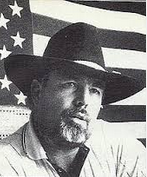 behalf, directing his vitriol first against his mother and then against her and David Koresh, who, as Vernon Howell, joined the Mount Carmel community in 1981. George eventually succeeded in winning a leadership election in 1984, after which he assertively changed the name of Mount Carmel to “Rodenville” and vigorously argued for his primacy. It took a complex series of events, including multiple hearings in court, George’s conviction on contempt of court charges, and his 1989 arrest for murder and eventual confinement in a mental institution, before Koresh could enjoy uncontested leadership of the Branch Davidians.
behalf, directing his vitriol first against his mother and then against her and David Koresh, who, as Vernon Howell, joined the Mount Carmel community in 1981. George eventually succeeded in winning a leadership election in 1984, after which he assertively changed the name of Mount Carmel to “Rodenville” and vigorously argued for his primacy. It took a complex series of events, including multiple hearings in court, George’s conviction on contempt of court charges, and his 1989 arrest for murder and eventual confinement in a mental institution, before Koresh could enjoy uncontested leadership of the Branch Davidians.
In the meantime Lois worked assiduously to develop the ideas stemming from her 1977 vision which revealed that the Holy Spirit was the feminine aspect of God. Beginning in 1980, she published Shekinah magazine (always capitalizing or otherwise emphasizing the first three letters in whatever typography she used), which reprinted materials that supported her theology from a variety of popular sources (Lois Roden 1981-1983; Pitts 2014. Like others before her, Lois understood her work as the last stage in the reformation of the SDA church in preparation for the imminent last judgment.
Through the early 1980s Lois continued spread her message, travelling through the U.S., to Canada, Israel, and the Philippines. At the same time, the future David Koresh both learned from her, largely through her Bible Studies, and began to develop his own distinctive theology, which is outlined in the entry on the Branch Davidians (1981-2006). Koresh eventually succeeded Lois as the central teacher for the Mount Carmel Community, though not without interference from George Roden and a contentious break from his former mentor, Lois.
DOCTRINES/BELIEFS
Since the Davidians originated in a sectarian desire to purify the SDA church and that goal remained prominent from Victor Houteff through the time of the Rodens, it is not surprising that many of the distinctive ideas of the SDA church were carried over into the Davidians and Branch Davidians. No matter what theological innovations were introduced, the Davidians and Branch Davidians retained the hope that that the return of Jesus to conduct the last judgment was imminent. Like the Millerites and SDAs before them, they arrived at that conclusion through a painstaking examination of the scriptures, in which the decipherment of the symbolic language of the book of Revelation figured prominently. Their interpretative efforts are preserved in a wide array of theological tracts, Bible Studies, and other literature , much of which is archived on the internet . Davidian and Branch Davidian exegesis frequently makes elaborate and complex typological arguments, in which, for example, figures or events from the Christian Old Testament are viewed as types of figures and events from the New Testament, are viewed which in turn are seen as as their antitypes. The new name adopted by the former Vernon Howell rested on that sort of biblical interpretation in which he could be seen as the antitypical David and Cyrus.
From the time of Victor Houteff through the leadership period of David Koresh, the establishment of a physical Davidic messianic kingdom in the land of Israel was also a prominent theological theme. Ben Roden worked hardest to bring such a kingdom into being in anticipation of the dawning of the end times, taking many trips to Israel in order to set up a community there to which his followers could then emigrate. The central role of Israel in Branch Davidian thinking would later figure into the 1993 siege of the Mount Carmel Center, as David Koresh and his followers struggled to fit the BATF attack into the end-times scenario that they expected.
The SDA notion that a contemporary prophetic figure could be the bearer of “present truth” also animated the various sectarian 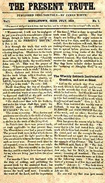 offshoots from that tradition. In the early days of the SDA Church, James White, a founder of the SDAs along with his wife Ellen, published a periodical entitled The Present Truth. On the first page of its first issue in 1849, he cited the promise of the author of II Peter 1:12 to the early Christian church, “I will not be negligent to put you always in remembrance of these things, though ye know them, and be established in the present truth.” White argued that such present truth could not be limited to the apostolic age but must at least potentially be continually available. He wrote that “Present truth must be oft repeated, even to those who are established in it. This was needful in the apostles (sic) day, and it certainly is no less important for us, who are living just before the close of time.” (James White 1849:1). Similarly, with regard to the observance of the Sabbath on Saturday, Ellen G. White wrote in her second volume of Testimonies for the Church (1885) that “The present truth, which is a test to the people of this generation, was not a test to the people of generations far back. If the light which now shines upon us in regard to the Sabbath of the fourth commandment had been given to the generations in the past, God would have held them accountable for that light.” (Ellen White 1885: 693).
offshoots from that tradition. In the early days of the SDA Church, James White, a founder of the SDAs along with his wife Ellen, published a periodical entitled The Present Truth. On the first page of its first issue in 1849, he cited the promise of the author of II Peter 1:12 to the early Christian church, “I will not be negligent to put you always in remembrance of these things, though ye know them, and be established in the present truth.” White argued that such present truth could not be limited to the apostolic age but must at least potentially be continually available. He wrote that “Present truth must be oft repeated, even to those who are established in it. This was needful in the apostles (sic) day, and it certainly is no less important for us, who are living just before the close of time.” (James White 1849:1). Similarly, with regard to the observance of the Sabbath on Saturday, Ellen G. White wrote in her second volume of Testimonies for the Church (1885) that “The present truth, which is a test to the people of this generation, was not a test to the people of generations far back. If the light which now shines upon us in regard to the Sabbath of the fourth commandment had been given to the generations in the past, God would have held them accountable for that light.” (Ellen White 1885: 693).
In their own distinctive ways, each of the leaders of the Davidians and the Branch Davidians laid claim to deliver such present truth. Victor Houteff was the most reticent about claiming any kind of prophetic authority, but that did not stop him from depicting the Shepherd’s Rod teachings as being of momentous consequence. In the first volume of The Shepherd’s Rod , he wrote concerning his own teaching that “no new-revealed truth was given to the church during the forty years from 1890 to 1930, and that therefore every claimant to a heaven-sent message during that period was a false one.” (Houteff 1930: 86 ). With Houteff’s own teaching, he implies, “new light” once more shone on the SDA church. Florence Houteff’s contribution of present truth centered on her prediction that April 22, 1959 would initiate the times of the end. Ben Roden had a robust prophetic self-consciousness and introduced a number of theological and ritual innovations based on his own ability to deliver present truth. So also did Lois Roden, especially with her teaching that the Holy Spirit was female. In general, appealing to the Adventist theological conception of “present truth” was the primary way in which a succession of Branch Davidian leaders strove to legitimate their authority. In constructing their prophetic personae, they drew on a well-established theological idea that simultaneously linked them to an authoritative past and justified their efforts at innovation. Their theological innovations were grounded in the idea of present truth.
RITUALS/PRACTICES
Given the importance of deciphering the Bible’s message about the end of the world and the last judgment, it is not surprising that a central ritual for the Davidians and Branch Davidians was the Bible Study. As conducted by leaders like Lois Roden, and later David Koresh, Bible Studies were less free-ranging investigations into the meanings of certain passages than they were catechetical exercises designed to reinforce the proper understanding of the text. In both Bible Studies and the various theological writings of Davidian and Branch Davidian leaders, the Bible was viewed as a single, coherent, self-interpreting whole. The interpreter’s exegetical ingenuity focused on arranging a mosaic of biblical passages that would clarify any obscurities in the text under consideration and deepen readers’ understanding of it. Transcriptions and audiotapes of Bible Studies also were a way for leaders to spread their messages to audiences well beyond the Mount Carmel Center .
The SDAs were well aware of the Jewish roots of Christianity, which originally led them to the observance of the Sabbath on Saturday. Among the Davidian and Branch Davidian leaders Ben Roden was particularly interested in extending ritual practice at Mount Carmel to include the major Jewish festivals as well (Ben Roden 1965). The Davidians and Branch Davidians favored a contemporary form of Jewish Christianity that emphasized the ritual continuities between the Judaism of Jesus’ day and the movement that he founded.
ORGANIZATION/LEADERSHIP
Although the Davidians and Branch Davidians had well-developed bureaucratic organizations, they were nonetheless highly dependent on charismatic forms of leadership. The concept of present truth prepared Adventists to look favorably on contemporary claimants to prophetic authority, even as religious authority came to be concentrated in one family and then another. In distinctive ways, each of the leaders from Victor Houteff through David Koresh claimed to provide just such guidance. Ben Roden, for example, not only came to understand himself as the biblical “Branch,” he also understood his work to continue that not only of Victor Houteff but of Ellen G. White herself, not to mention the prophets from the Bible. He wrote that “it is plain to see that Ellen G. White and Victor T. Houteff were indeed prophets of God and were, truly, writing under the influence of the Spirit of Prophecy. See Amos 3:7. Since Mrs. White and V. T. Houteff both are in the grave, as are the Bible prophets, it is necessary to consult the Branch and Joshua, the Living Testimony of Jesus in the church today, for an interpretation in harmony with the Scriptures and their writings.” (Ben Roden 1955-1956:95). Lois Roden legitimated her own authority primarily by reference to her 1977 vision in which she learned the true nature and gender of the Holy Spirit. Against the backdrop of his predecessors, David Koresh’s claims to authority in the Mount Carmel community appear as variations on a theme. Like Ben Roden, he saw himself in the pages of the Bible, specifically in the figure of the Lamb of God mentioned in Revelation 5, as being worthy of opening the scroll sealed with seven seals. Like Lois Roden, Koresh also claimed an extraordinary revelatory experience, something like an ascent into the heavens while he was in Jerusalem in 1985. Also, like Victor Houteff and Ben Roden, Koresh saw himself as playing a distinctive role in the establishment of a Davidic messianic kingdom.
Charismatic claims to authority do not have a social impact unless they are recognized and acted upon. All of the Davidian and Branch Davidian leaders proved capable of attracting at least some followers to the Mount Carmel Center and, through the dissemination of their teachings, to persuade others that they had achieved substantial new insight into the meaning of the scriptures. The introduction of distinctive theological innovations, such as Florence Houteff’s setting a date for the beginning of the end times and Lois Roden’s proclamation that the Holy Spirit was feminine, typically provoked moments of crisis for at least some of their followers. Defections and at least one significant schism among the Davidians can be traced to moments like those. On the other hand, those who managed to assimilate the new theological ideas into their pre-existing repertoires of commitments only strengthened their commitment to the group and its current leader. The process of strengthening commitment can be seen clearly in the interactive Bible Studies. Since the Bible Studies had more of a catechetical than exploratory function, every time someone attended one in person, read one, or heard one on audiotape, it became an opportunity for demonstrating and reinforcing commitment to the message being taught. In addition to being occasions to expound the distinctive theology of the Davidians and Branch Davidians, the Bible Studies became opportunities for successive leaders to enact and reinforce their leadership.
ISSUES/CHALLENGES
Both Davidians and Branch Davidians continued to face a challenge that they had in common with all other millennialists. Like the followers of William Miller who faced the Great Disappointment, they continually had to reckon with the delay of the advent of Jesus at the final judgment. When Florence Houteff, like Miller and others before her, actually set a particular date for the events of the end, the challenge became all the greater. The continued delay of the end inevitably cost the various groups that occupied the Mount Carmel Center members, but even those whose commitment was not thoroughly shaken by failed predictions or evident delays consistently had to calibrate their understanding of when and how the events of the end would, finally, unfold. Leaders faced the challenge of maintaining a sense of urgency in the expectation that the world would soon be transformed at the same time that they had to develop explanations for its undeniable delay.
Despite their substantial missionary efforts, primarily among members of the SDA church, Davidians and Branch Davidians also had to reckon with the reality that their message was being rebuffed by their target audiences much more often than it was being accepted. From Victor Houteff on, Davidian and Branch Davidian leaders were unsparing in their indictments of the SDA church. They also, however, made members of the church their primary targets for proselytization. The comparatively small numbers of members of the Mount Carmel community and sympathizers over time, however, show that the groups remained as deviant and heretical in the eyes of the SDA church as they were when Houteff was first excommunicated in 1934. The various traditions initiated by Houteff’s challenge to the SDA church remained small sects in relatively high tension with their parent body and were persistently unable to recruit more than a few hundred followers. The ongoing tension that the Davidians and Branch Davidians experienced with the SDA church eventually paled next to the armed conflict that the Mount Carmel community of David Koresh experienced with the forces of the U. S. government.
REFERENCES
Gallagher, Eugene V. 2013. “’Present Truth’ and Diversification among the Branch Davidians” Pp. 115-26 in Revisionism and Diversification in New Religious Movements, edited by Eileen Barker. London: Ashgate.
Houteff, Florence. 1958. The Symbolic Code , Vols. 10-13. Accessed from http://www.davidiansda.org/new_codes_or_false_codes.htm on 2 August 2013.
Houteff, Victor. 1943. The Leviticus of the Davidian Seventh-day Adventists. Accessed from http://www.the- B ranch.org/Davidian_Association_Leviticus_Bylaws_Constitution_Houteff on 2 August 2013.
Houteff, Victor. 1930. “The Shepherd’s Rod, Vol. I Tract.” Accessed from http://www.the-branch.org/Shepherds_Rod_Tract_Israel_Esau_Jacob_Types_Houteff on 2 August 2013.
Newport, Kenneth G. C. 2006. The Branch Davidians of Waco : The History and Beliefs of an Apocalyptic Sect. New York: Oxford University Press.
Pitts, William L. 2014. “SHEkinah: Lois Roden’s Quest for Gender Equality.” Nova Religio .
Roden, Ben L. 1965. “God’s Holy Feasts.” Accessed from http://www.the-branch.org/Six_Holy_Feasts_In_The_Old_And_New_Testaments_Ben_Roden on 2 August 2013.
Roden, Ben L. 1960. “Branch Field Letter to the Believers in the Land of Promise.” Accesed from http://www.the-branch.org/Lois_Roden_In_Israel_As_Chairman_Ben_Roden on 2 August 2013.
Roden, Ben L. 1959. “ The Three Harvest Feasts of Exodus 23:14-19; Lev. 23.” Accessed from http://www.the-branch.org/Passover_Wavesheaf_Antitype_Branch_Davidians_Ben_Roden on 2 August 2013.
Roden, Ben L. 1958. “ The Family Tree—Isaiah 11:1.” Accessed from http://www.the-branch.org/Isaiah_11_Family_Tree_Judgment_Of_The_Living_Ben_Roden on 2 August 2013.
Roden, Ben L. 1955-1956. “Seven Letters to Florence Houteff. ” Accessed from http://www.the-branch.org/Jesus%27_New_Name_The_Branch_Day_Of_Atonement_Ben_Roden on 2 August 2013.
Roden, Lois I. 1981-1983. SHEkinah. Accessed from http://www.the-branch.org/Shekinah_Magazine on 2 August 2013.
Roden Lois I. 1980. “By His Spirit . . . .” Accessed from http://www.the-branch.org/Godhead_Masculine_Feminine_Father_Mother_Son_Lois_Roden on 2 August 2013.
Rowe, David L. 2008. God’s Strange Work: William Miller and the End of the World. Grand Rapids, MI: Eerdmans.
Tabor, James D. and Eugene V. Gallagher. 1995. Why Waco? Cults and the Battle for Religious Freedom in America Today. Berkeley, CA: University of California Press.
The General Association of Davidian Seventh-day Adventists. 2013. Accessed from http://www.davidian.org/ on 2 August 2013.
White, Ellen. 1885. Testimonies for the Church , vol. II. p. 693. Accessed from http://www.gilead.net/egw/books/testimonies/Testimonies_for_the_Church_Volume_Two on 2 August 2013. .
Post Date:
3 August 2013
